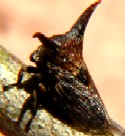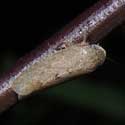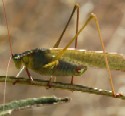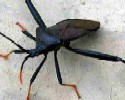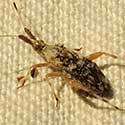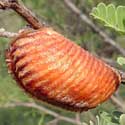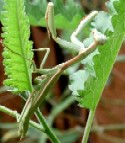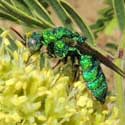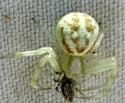Velvet Mesquite
Prosopis velutina
(P. juliflora)
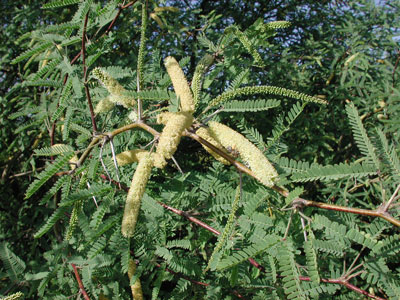
Photographed along Mesquite Wash, Maricopa Co., Arizona. April 2008.
Many, many insects and other animals rely on the mesquites that grow along riparian zones and in bosques. The flowers are an important source of nectar and pollen for native pollinators such as solitary bees. And the foliage, especially when freshly grown in spring or after summer rains supports countless caterpillars. All these insects and the spiders that prey upon them in turn are food for birds such as verdin, bell's vireo and lucy's warbler.
Some critters commonly found on mesquite are from upper left, Marine Blue Butterfly, Casebearer Beetle, Mesquite Thorn Hopper, Leafhopper, Elegant Katydid, Giant Mesquite Bug, Clouded Plant Bug, Egg Mass of Praying Mantis, Adult Praying Mantis, Cuckoo Wasp, Crab Spider, and Bell's Vireo. Click on any image for more detail and discussion.
TREE: Usually a single-trunked tree, but sometimes grows as a large
shrub particularly when cut or fire damaged. Bark of older branches and trunk is dark gray,
with fissures.
LEAVES: Twice-compound leaves with usu. two or four sub-rachises each with numerous
small leaflets. Young leaves set with fine pubescence. Leaves, as in many legumes,
fold
up at night. With magnification, small glands can be found on the leaf rachis (shown
below). These produce sweet substances that are attractive to ants.
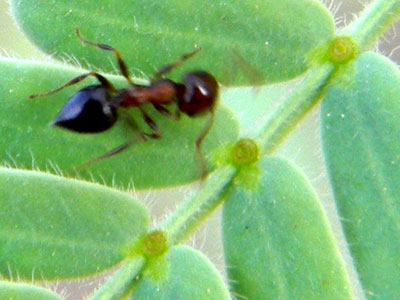
A Crematogaster ant on the underside of a leaf of Prosopis velutina at Mesquite Wash, Maricopa Co., Arizona. Aug. 2011. The glistening spots are extra floral nectaries from which these 3mm long ants get food.
RANGE: Frequent throughout the Sonoran Desert in Arizona and Mexico
along washes and near riparian habitats. Broad terraces adjacent to riparian streams may
support woodlands predominated by mesquite. These are termed bosque - Spanish for woods.
Ranges into deserts of California to Texas.
FRUIT: Elongate beans slightly constricted between each bean-seed. Very sweet to
taste when ripe - i.e. reddish-yellow in color. Later changing to yellow-brown.
FLOWERS: Spikes of numerous, small yellow-cream flowers. The petals are nearly
rudimentary - instead flower color is the result of long, colored stamens.
ARMED. Generally has sturdy, straight thorns, two per node. There is considerable
variation in the length of thorns. Even within the same plant some branches, particularly
those in direct, hot sunshine, have much longer, sharper thorns.


